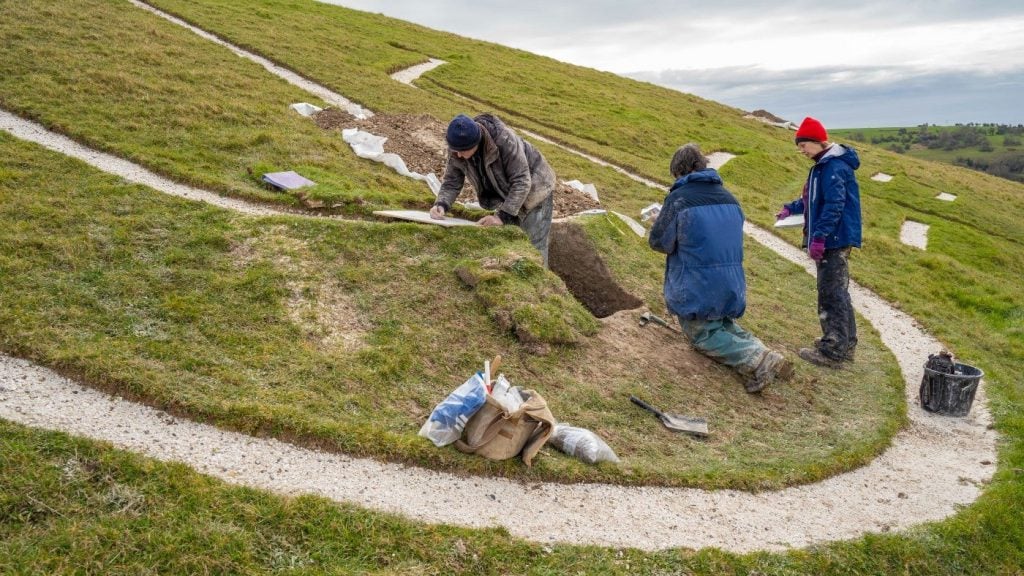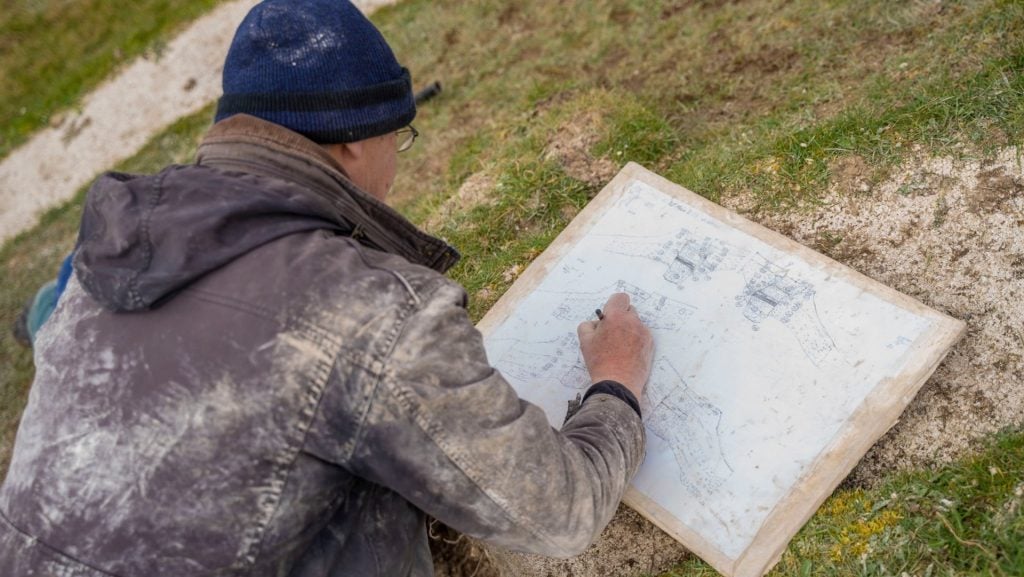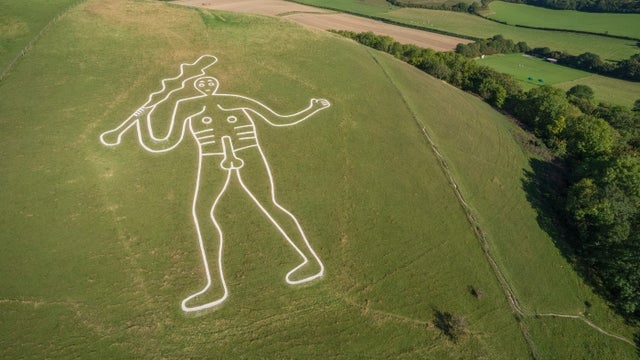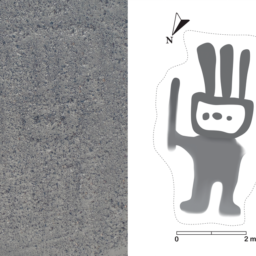Archaeologists have made remarkable new discoveries about the mysterious Cerne Abbas Giant, the U.K.’s largest chalk hill figure. Perhaps most notably, they have determined that the 180-foot-tall naked man may have originally been wearing pants.
The figure is also likely an Anglo Saxon creation dating to medieval times. “This is not what was expected,” geoarchaeologist Mike Allen, who helped conduct tests on the massive artwork, said in a statement. “Many archaeologists and historians thought he was prehistoric or post-medieval, but not medieval. Everyone was wrong, and that makes these results even more exciting.”
Phillip Toms, a physical geography professor in at the University of Gloucestershire, used Optically Stimulated Luminescence testing, which can determine when individual grains of sand last were exposed to sunlight, to study samples from the figure and the surrounding hillside. In the deepest layer of earth, the date range was 700 to 1100 A.D.
“The archaeology on the hillside was surprisingly deep—people have been re-chalking the giant over a long period of time,” National Trust senior archaeologist Martin Papworth said in a statement. “The deepest sample from his elbows and feet tells us he could not have been made before 700 A.D., ruling out theories that he is of prehistoric or Roman origin.”

Archaeologists bag up soil samples taken from the Cerne Giant. Photo courtesy of the National Trust.
Another earthwork on the hill, a rectangular formation called the Trendle is believed to date to the Iron Age, which is why some experts suspected the giant was contemporaneous.
But other recent testing conducted by the National Trust had also found evidence that the giant, located in Dorset, England, was the product of medieval times. In July, Allen announced that soil samples had been found to contain traces of two microscopic snail species that first appeared in the U.K. during the 13th and 14th centuries.
The new results, which Allen told the New Yorker are more definitive, suggest that the giant could be even older than that—but still present a wide timeframe for the work’s creation, from 700 to 1560 at the latest.
Interestingly, even if the giant does fall on the later end of that spectrum, it still precedes the earliest written account of the hill figure, which dates to 1694, by over 100 years. (Such geoglyphs can be found across southern England, carved into the chalk downs.)
But if the giant was there all along, why isn’t it mentioned in surviving documents from nearby Cerne Abbey, founded in 987, or in a Tudor land survey conducted in 1617? And why did abbey records refer to Giant Hill, as it is now known, as Trendle Hill, after the less prominent of the two artworks?
Previously, experts had theorized the artwork dated to the English Civil War (1642–51), and was made to mock Oliver Cromwell.

National Trust senior archaeologist Martin Papworth making site sketches during soil sampling at the Cerne Giant. Photo courtesy of the National Trust.
Now, based on the new dates, Papworth’s best guess is that the giant fell into disrepair for several centuries, with grass overgrowth largely obscuring views of the artwork, which is formed from shallow trenches filled with chalk rubble. Then, at some point, someone noticed the forgotten figure and cut the grass to restore it.
Then there is the matter of the pants.
The new research suggests that the giant’s prominent penis may actually be a later addition to the piece. A topographical map of the figure created using Light Detection and Ranging (LiDAR) mapping tools, which take topographical readings of the earth’s surface using laser pulses linked to a GPS system, revealed a continuous belt line across the waist, beneath the grass and interrupted by the 26-foot-tall penis.

National Trust senior archaeologist Martin Papworth making site sketches during soil sampling at the Cerne Giant. Photo courtesy of the National Trust.
“You could argue that he had trousers on originally and later on, perhaps as late as the 17th century, the penis was incorporated,” Papworth told the London Times. “It may not be such a shocking thing to have had him on the hillside in the medieval period because he may have had trousers on. That is likely.”
The costume change may have been a simple practical joke. “There were a few characters who owned the land in the 17th century, the sort of people who might well have graffitied to change him into a figure of fun,” Papworth added.
Regardless of when it was created and whether or not it was originally naked, the purpose of the massive artwork remains unknown.
One theory is that the figure depicts an Anglo Saxon god known as Heil or Helith. (One 18th century historian wrote that locals called it Helis.) It’s possible that Cerne Abbey was even founded to help convert the locals who worshiped such gods to the Catholic faith.












